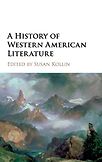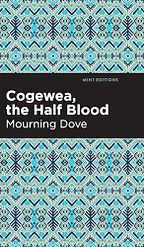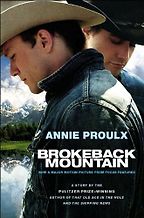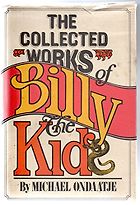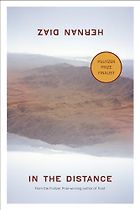How do you understand the Western novel as a literary form? What are its core ingredients?
The literary history of the genre is somewhat complex. We often understand the Western as coming into being in the 19th century when the United States entered the industrial period. The development of new printing technologies made production less expensive, and we saw a new type of fiction emerge called the ‘dime novel.’ From its beginnings, this literature drew on other pre-existing genres, including Puritan captivity narratives and colonial adventure narratives.
So, from these forms, the Western developed its own stories about frontier violence and the conflict between so-called ‘savagery’ and ‘civilisation,’ and it developed its own popular tales of action and adventure involving heroes and villains who fought over land and resources.
I think it’s important to note that, before it was a noun, the term ‘Western’ was used as an adjective to describe certain tales of adventure that took place specifically in the American West. But these Western adventure tales were already part of a larger group of narratives that took place in various contact zones and colonial spaces across the globe. It was only later that some of those tales became identified as Westerns.
Right, I see what you mean about its capaciousness. I recently spoke to the author Kate Kruimink about Australian historical fiction, and recognised many of those quintessentially Western qualities in stories of the Australian ‘frontier.’
The ‘Outback’ story, right. If we only think of the Western as taking place during a particular historical moment—the time between 1865 and 1900—we erase or write out of history many modern and diverse stories about the West. Also, while we often think of the Western as a uniquely American genre, we can see that it developed out of colonial adventure narratives—and as it developed over time, the Western has become a complex form that has an ability to address a wide variety of beliefs and sentiments. It has attracted a very diverse set of writers who use its iconography and conventions to tell new stories about place and belonging.
That’s one of the most interesting things about the Western—it’s a very flexible form, really.
How did you select your landmark Western novels? What were your criteria?
I like these texts because they restore to memory cultural developments that were happening in the Western that sometimes get lost in our literary histories of the form.
Yes—tell me about Cogewea, first. We’ll step chronologically through the books by publication year. This was first published in 1927.
Cogewea is considered one of the earliest novels written by a Native American woman. Its author was a Salish writer known as Mourning Dove, or Hum-Ishu-Ma. She was named Christine Quintasket at birth. Her Western novel is really a reminder of how the genre is a diverse form that has the ability to address a range of ideas and sentiments.
The novel basically offers a critique of the ‘savagery-civilisation’ binary by showing the corrupt policies of the US government and the ways in which white settlers often tried to cheat Native Americans out of their land. The book was published in the early 20th century and takes place on the Flathead Reservation in Montana in the early days of the Allotment Era.
Perhaps you’d explain that term for our international audience.
This was a time when the US government sought to assimilate indigenous peoples by breaking up the reservations and giving the land to individual Native Americas. Indigenous peoples continued to lose land as a result, and today we can clearly see how this history of dispossession has had a devastating impact on Native American communities.
Early in the novel, we learn that her white father has abandoned the family. Likewise, her mother dies when she is young, so she’s raised by her Native American grandmother. Cogewea is a talented horsewoman who attracts the attention of Densmore, an unscrupulous white settler from the East. He believes that Cogewea is wealthy, so he tries to take advantage of her by stealing her land.
“Western adventure tales were part of a larger group of narratives that took place in contact zones and colonial spaces across the globe”
The novel is a ‘Western romance’ that uses the genre’s codes and conventions as a way of critiquing settler colonialism. So, rather than featuring the upright cowboy who brings ‘civilisation’ and order to the West, the main cowboy figure in this novel is someone motivated by greed and manipulation.
The novel centers on and critiques these settler sentiments. There are many moments in the novel where the author shows that the so-called ‘benevolence’ of the federal government has actually been quite harmful to Native Americans. I think it’s a remarkable text that in many ways anticipates the themes we see in later books like David Grann’s Killers of the Flower Moon, about the Osage murders.
And the idea of the Western romance does serve as a forceful metaphor for this idea of the West as a space of cultural encounter.
Some folks might classify it as a national allegory. The conflicts taking place among characters and within families symbolise the US and larger struggles over land and national development as well as Indigenous resistance to that.
The mythology of the West has spread well beyond American borders. Your second Western novel recommendation is The Collected Works of Billy the Kid, by Michael Ondaatje. Ondaatje is not American, yet he has chosen an icon of the American West as his subject matter.
This book is another reminder, like you said, of how diverse global audiences have found interest in the Western, and they’ve also been able to develop the genre in new ways.
The Collected Works of Billy the Kid, published in 1970, was written by the Sri Lankan-Canadian author Michael Ondaatje. In some ways it’s very difficult to classify this book because it draws on fragments of the past that the author collects in order to construct a story about—to help us understand the mind of—one of the most legendary outlaws of the American West. The kind of texts that Ondaatje includes are fragments from a dime novel, a play, illustrations from comic books, news clippings from the era, and historical photos.
The book was published in the seventies, an era that often explored the problem of the anti-hero. Ondaatje’s book also explores themes of violence, brutality, and so-called ‘savagery’ in the West. But the problem he faces is that because the region has been so romanticized and because of all the mythology that has circulated over the past 100 years, it’s nearly impossible to determine what is fact and what is fiction about the region. In collecting these fragments, the author foregrounds that larger problem of the archive—what is there and what is not there—and points to the problem of separating fact from fiction, which is a recurring issue in scholarship about the American West.
Right.
As it turns out, we really don’t know much about Billy the Kid outside of the legend. We know he was born Henry McCarty, that he went by the alias William H. Bonney, and that he was originally from New York. It was said that he killed his first man by stabbing him in the back with a knife, or maybe with a pair of scissors. So, clearly, this is a figure who is not very heroic. He’s a violent force, and violence or brutality are elements that have shaped his life from early on.
We know that, later, Billy was employed as a cow hand on a ranch in Lincoln County, New Mexico, and it’s believed that the owner of the ranch where he worked was killed by a rival force while Billy looked on helplessly, unable to intervene. Billy later sought revenge, and, with a group of people, killed the man thought to be responsible for murdering their boss.
Billy ran free until Pat Garrett, a man who was once his friend, became sheriff and was ordered to bring him in. Billy died at a young age—at 22, when Pat Garrett killed him in a dark room.
This book is an important meditation on Western violence and brutality. It gets us into the inner mind of a killer who is consumed by violence. As Ondaatje shows us, there seems to have been no real purpose to the brutality. Likewise the divisions between hero and villain, between law and outlaw, are constantly blurred in the text. One of the interesting things for me is that the book is an experimental text. It’s poetic and artful in a surprising way that we might not associate with the genre of the Western. It received a lot of praise when it was first published and won the Governor General’s Literary Award in Canada.
For me, it stands out as a landmark text because it was this really celebrated literary—even avant-garde—Western, if you can imagine that.
Absolutely. I think it’s a great choice. And I also think that partly this is what draws me to the Western novel—the idea of it, as a place, as representing some moral grey area, or even a moral black area.
Yes, that’s a really crucial code, trope, or convention of the form.
And the third author we’re going to discuss—Cormac McCarthy—certainly embraces this in his work.
Yes. I chose All the Pretty Horses, which won the National Book Award when it was published in 1992. Some readers might take issue with me for not choosing Blood Meridian or No Country for Old Men. But I think all of these novels take up that problem of violence, and ask: once unleashed, can violence and brutality ever be contained?
Masculinity becomes a crucial topic in these books. Specifically in All the Pretty Horses, fathers play a large role, and they remind us of the ways in which the Western itself asks questions about what it means to be a man.
All the Pretty Horses takes place in a modern period, post-World War II. It asks whether the older generation of men will be able to serve as good role models for the younger generation. McCarthy seems to ask whether his main character, John Grady, should follow in the steps of his father or are there other standards of masculinity that might be available to him?
John Grady’s father was a POW and in some ways never made it back from the war. He experienced horrific violence and, as a result, is emotionally shut down. McCarthy features a lot of male characters in his novels who have been violent-ised or turned into killing machines by military training or experience in battle.
In discussing her novel Trinity, about the atomic scientist J. Robert Oppenheimer, Louisa Hall explained the importance of exploring these highly conflicted and troubled men. Her argument is that we absolutely need to understand these men and their motivations if we want to survive them. I think that All the Pretty Horses is exactly about that.
John Grady is a young cowboy from Texas who faces a series of losses. This is a common settler theme in the Western: elegy, loss, nostalgia. The West he has known all his life is changing due to the Cold War military infrastructure and a developing oil boom. After the death of his grandfather and transformations in the ranching world, he ends up leaving home in search of new possibilities. Along the way, he meets Lacey Rawlins, and the two head south of the border.
Five Books interviews are expensive to produce. If you're enjoying this interview, please support us by donating a small amount.
By locating its setting in Mexico, the novel reminds us of the colonial underpinnings of many Westerns, and how the genre’s Western adventures typically take place in greater Mexico. While the Western often positions the West as a place of promise and possibility, in McCarthy’s novels the West is really revealed to be a settler dreamspace.
The title of the book, for instance, draws from the lyrics of a nursery song, which is an interesting choice. The nursery song itself conjures up that whole idea of bedtime stories, the notion of a dream world. This book is really about settler fantasies, the desire for so-called ‘innocent times.’ It’s about the fantasy of acquiring power, mastery, and ownership. The way the main character imagines Mexico and Alejandra, the love interest, really foregrounds the limits and restrictions of those fantasies.
There’s a critic, Sara Ahmed, who talks about how critique is ‘sticky’; it often sticks to the very person engaged in making the criticism or launching the critique. So, in the case of McCarthy and his novel, I find it interesting how some readers accuse the author of engaging in gender stereotypes and colonial fantasy. I would argue that McCarthy is precisely trying to lay bare these ways of thinking, and how these desires for ownership and domination come to us from the place of the fantastic or the dream world.
There are some electrifying scenes of ‘breaking’ horses. They are strangely intimate, even erotic. I analyse them sometimes in workshops and they do make some people very uncomfortable.
Of course, horses in the Western represent freedom and mobility, the classic settler myth of the West itself. Freedom, possibility, promise, mobility. Horses represent a time before modernisation and industrialisation. They represent the possibility of making deeper connections to the natural world that some Americans believe they have lost.
Yet there are also long scenes in the book where the cowboys are breaking horses. Clearly this is showing us a major contradiction in the genre, and we start to see the underside of the fantasy, and the nightmare that the dream has really become.
And I suppose it works both ways, this stickiness. By which I mean: I love this book with all of my heart, in an uncritical way—because the romance of it all, the adventure at its heart. I understand it to be a novel with weight and deeper intention, and I respect that. But I also love it at face value.
It really does engage all these different affects in the reader. So: loss, mourning, nostalgia. Also humour, and an appreciation of beauty. But it also, I think, tries to nudge us in a new critical direction. The Western is a messy genre, so perhaps it’s not surprising that all these things stick to it.
And many of these things can also be said of Annie Proulx’s Brokeback Mountain. I think it was first published as a short story in 1997 and was later adapted very successfully for the screen.
Yes, and it was also published as its own book in 2005. In many ways, Brokeback Mountain is not a new story, but instead reminds us that the Western from its very beginnings engaged with themes of same-sex desire.
Really?
If we look at early Westerns, like Owen Wister’s The Virginian from 1902, for instance, the main narrator of that story engages in scopophilia in an important scene where he looks through a peephole at the cowboy hero, whom he clearly admires. The narrator also, at one point, imagines out loud what it would be like to be a woman, and how he would no doubt be very much attracted to the Virginian.
Later, in the 1949 Western novel Shane, by Jack Schaefer, everybody is in love with the hero, including the young boy, his father, and his mother. So I’m interested in how Annie Proulx restores to memory these concerns of same-sex desire. She, along with other scholars, also helped recover The Power of the Dog, by Montana author Thomas Savage, that was made into a film recently directed by Jane Campion.
Proulx’s story builds on the Western books about gender and violence that I mentioned previously by indicating how certain forms of masculinity have become absolutely brutal. In this case, it’s in the form of homophobic fathers and employers.
Her Western takes place in the early 1960s. The main characters, Jack and Ennis, are sheepherders instead of cowboys. The two men fall in love while working in Wyoming. They end up in unhappy and tortured marriages but manage to meet up and reunite for the next several years. Their relationship ends when Jack is brutally killed.
Brokeback Mountain had a tremendous impact, and no doubt opened up new possibilities for storytelling in the genre. More recently, the filmic Western Strange Way of Life, by the Spanish director Pedro Almodóvar, tells the story of an outlaw and a sheriff who have a relationship but are on different sides of the law. Toward the end of the film, the director cuts to the chase; one of the characters, asks—I paraphrase—’What if we lived together? Grew old together? Took care of each other?’ Almodóvar puts it out there as a matter-of-fact possibility. In his film, two men love each other. What keeps them apart or separates them is their relationship to the law.
It’s a short film, but in a way it offers another path for the Western to develop that is different from Brokeback Mountain and The Power of the Dog.
I suppose hypermasculine spaces are so often a backdrop to the homoerotic. Plus all this blurring of fact and fiction must have offered cover for a great many undeclared or unofficial relationships.
Absolutely.
Brokeback Mountain begins in the 1960s. I would have expected the historical setting of the Western to predate the ‘closing of the frontier’ in the 1890s. Why has this mode of fiction outlasted the frontier itself?
I think what we see in these more modern Westerns is how the Western novel is a flexible form that can address a variety of plots, conflicts, characters, and political beliefs that still fascinate us in the present era. I think the genre continues to develop precisely because it is able to tell so many different stories about belonging, community, loneliness, and connection to the land… These are all things that still speak to us today.
Absolutely. I think that brings us to our final book, Hernan Diaz’s In the Distance. It was Diaz’s first novel, was published by a small press, but went on to become a finalist for the Pulitzer Prize. It also recently appeared in our recent interview with Paul Carlucci on literary historical fiction—he said In the Distance was one of his favourite books of all time.
Hernan Diaz is an Argentinian-American author. He also lived as a child in Sweden, and the main character in In the Distance is a young Swedish man called Håkan, who goes by ‘Hawk.’ In the Distance encourages us to consider more fully who these people were who were moving through the West. What were their stories, what motivated them to travel in this space?
It also reminds us that, while the Western is often considered a uniquely American form—that is, the United States—it’s important to note that there were many other writers across the world who were drawn to the genre. In scholarship today, we recognize the need to distinguish between US Westerns, Mexican Westerns, German Westerns, Spaghetti Westerns, Canadian Westerns, and so on. It’s a global form.
Hernan Diaz’s novel reroutes the traditional trajectory of the Western by tracing the convoluted travels of his main character—who goes from Europe to Argentina, California, the Midwest, and all the way to Alaska. At the beginning of the book, he starts out with his brother Linus. The two men leave Europe and try to head specifically for New York but end up losing each other right way.
Hawk then ends up on a long trip that eventually takes him to San Francisco and the gold rush, though his goal is really to return to his brother back East. He is constantly thwarted along the way. He meets numerous shady figures and undergoes all these trials and conflicts as he tries to reunite with his brother.
The novel is really about the unsettling of the West, and it revisits that classic hero of the Western novel: the ‘American Adam.’ This is the figure who tries to throw off history, tries to sever his family ties, and tries to break free from the past in order to experience rebirth and renewal in the so-called Edenic spaces of the West. But what Håkan finds instead is a devastating lack of connection and belonging. He experiences a kind of soul-crushing loneliness and a very limited and truncated life.
I should say that the novel also contains one of the most memorable and disturbing kisses in the literary history of the Western. I won’t spoil it for the people who haven’t read the book yet. But the novel is beautifully written, and it makes us reassess the foundations, not only of the Western, but of many dominant cultural myths and fantasies of America itself.
The New York Times said Diaz had “plundered an antique genre for parts.” Is it still possible to write a new and original Western today, or has it started to tarnish?
It doesn’t appear to. I can think of all those filmic and television Westerns that are profoundly popular today. Like Yellowstone. I’m in Montana, and it’s had a major impact here with tourism and travel.
The Western may be an antique genre, but it’s not antique in that it’s no longer useful or serviceable. It’s antique in that it’s a genre we’ve seen re-imagined time and time again. I think a lot of people have plundered or reused elements of the Western to tell new stories and to critique the very foundations of the beliefs and fantasies that often fuel the genre.
Interview by Cal Flyn, Deputy Editor
September 6, 2024. Updated: September 10, 2024
Five Books aims to keep its book recommendations and interviews up to date. If you are the interviewee and would like to update your choice of books (or even just what you say about them) please email us at [email protected]

